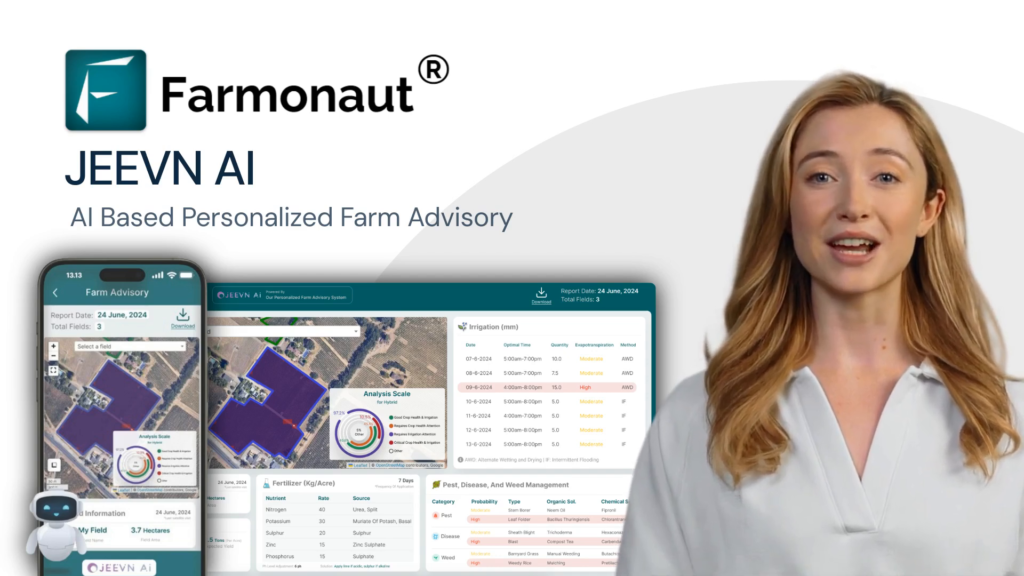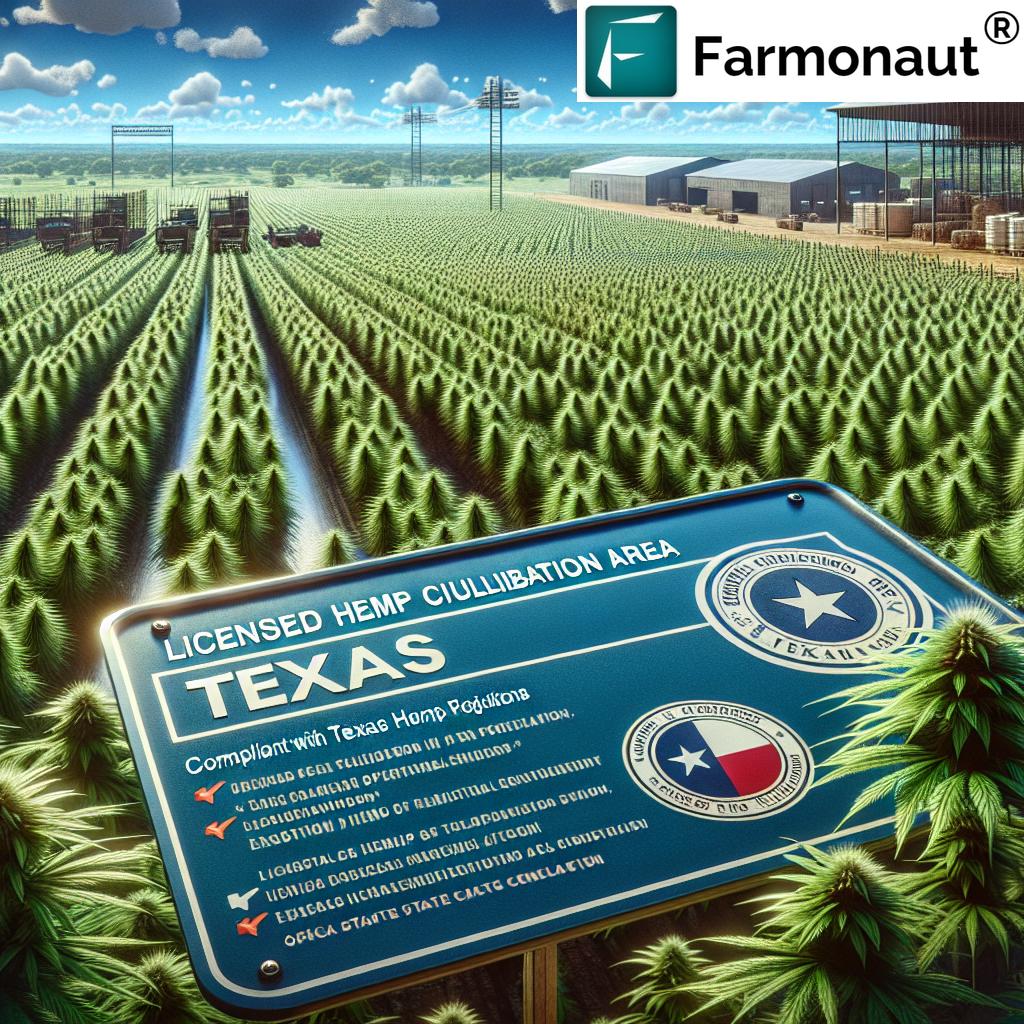Sustainable Agriculture Grants 2024: Top USDA Funding, Programs, and Innovations for 2025
“In 2024, the USDA allocated over $300 million to sustainable agriculture grants supporting soil health and climate resilience.”
Table of Contents
- Understanding Sustainable Agriculture Grants
- Top USDA Sustainable Agriculture Grants 2024/2025
- Comparative Grant Summary Table
- 2025 Grant Priorities and Successful Application Tips
- Impact and Future of Sustainable Agricultural Grants
- USDA Grants Beyond Funding: Boosting Resilience & Sustainability
- Farmonaut: Satellite Technology in Sustainable Agriculture
- FAQ: Sustainable Agriculture Grants
- Conclusion
- Farmonaut Subscription Plans
Understanding Sustainable Agriculture Grants
Sustainable agriculture grants and related sustainable farming grants are financial incentives provided by government agencies, non-profit organizations, and private institutions. Their primary objective is to encourage farmers, enterprises, and rural communities to adopt environmentally friendly, economically viable, and socially responsible farming practices.
With the global population continually on the rise and climate change intensifying, the need for sustainable agriculture has never been more critical. These grants play a vital role in supporting farms to implement resource-conserving practices, improve soil health, reduce greenhouse gas emissions, and boost biodiversity. They are a cornerstone for driving innovation and resilience within the agricultural sector, especially in the United States.
- Resource Conservation: Grants often fund projects focused on soil health, carbon sequestration, water-efficient irrigation systems, and biodiversity through crop diversification and agroforestry.
- Climate Resilience: Funding supports farmers’ efforts to increase resilience against extreme weather by implementing cover cropping, crop rotation, and organic methods.
- Technological Innovation: Grants for sustainable farming are increasingly supporting precision agriculture technologies, data analytics, and real-time monitoring to optimize resource use.
The USDA (United States Department of Agriculture) remains the primary source of sustainable agriculture grants statewide. USDA sustainable agriculture grants are especially notable for their targeted funding in supporting resilience, environmental stewardship, and innovative farming.
Key Attributes of Sustainable Agriculture Grants
- Environmental Sustainability: Focus on reducing the negative impact of farming with methods that conserve resources.
- Economic Viability: Promote production systems that remain profitable for farmers and rural entrepreneurs.
- Social Responsibility: Support community development, fair labor, and stronger local food systems.
- Innovation: Fuel the adoption of modern technologies, including carbon footprinting and blockchain-based traceability.
Commonly Funded Practices in 2024/2025
- Organic farming & integrated pest management
- Water-efficient irrigation technologies and systems
- Agroforestry & diversified cropping systems
- Cover cropping and reduced-tillage approaches
- Renewable energy adoption on-farm
Top USDA Sustainable Agriculture Grants 2024/2025
In the United States, the USDA remains the primary provider of sustainable agriculture grants in 2024 and 2025. Key programs include:
- Sustainable Agriculture Research and Education (SARE) Program: Prioritizes farmer-driven research and education for sustainable practices and systems.
- Environmental Quality Incentives Program (EQIP): Targets on-farm conservation practices like soil health-improvement, carbon sequestration, and water conservation.
- Conservation Stewardship Program (CSP): Rewards producers who maintain and improve conservation systems across working lands.
- Agricultural Conservation Easement Program (ACEP): Helps preserve wetlands and farmland, indirectly supporting sustainable agriculture outcomes.
- Beginning Farmer and Rancher Development Program (BFRDP): Provides support and resources for new and underserved farmers to adopt sustainable practices.
Other significant contributors in the sustainable agriculture grants landscape in 2025 include state agriculture departments, local sustainability initiatives, and private foundations prioritizing rural development and climate resilience.
Comparative Grant Summary Table: USDA Sustainable Agriculture Grants 2024/2025
| Grant Name | Eligible Applicants | Estimated Funding Amount (USD) | Application Deadline | Focus Area | Notable Requirements | Est. Success Rate (%) | Proj. Env. Impact Score (1-10) |
|---|---|---|---|---|---|---|---|
| SARE (Sustainable Agriculture Research & Education) | Farmers, researchers, educators, NGOs | $15,000–$300,000 | Oct–Dec 2024 (region-dep.) | Research, soil health, education, climate resilience | Must demonstrate sustainability & outreach; collaboration encouraged | 22* | 9 |
| EQIP (Environmental Quality Incentives Program) | Producers, farmers, ranchers | $2,500–$450,000 | Typically through fall 2024 | Soil, water, climate, on-farm conservation | Conservation plan required; ranking system in place | 31* | 8 |
| CSP (Conservation Stewardship Program) | Producers, all cropland/forest/grassland managers | $5,000–$200,000 (annual) | Rolling — varies per state | Soil health, carbon sequestration, environmental stewardship | Baseline conservation compliance improv. required | 25* | 10 |
| ACEP (Agric. Conservation Easement Program) | Landowners, state/local gov., tribes, NGOs | Up to $500,000+ | April–July 2024 | Wetland/farmland protection | Permanent/long-term easement required | 13* | 8 |
| BFRDP (Beginning Farmer & Rancher Dev. Program) | Educational organizations, NGOs, extension services | Up to $600,000/project | August 2024 | Next-gen sustainable practices, producer resilience | Focus on outreach, diversity, underserviced | 17* | 7 |
For more information, visit the USDA Natural Resources Conservation Service or contact your local extension office for region-specific details and assistance.
2025 Grant Priorities and Tips for Winning Sustainable Agriculture Grants
The priorities of sustainable agriculture grants in 2025 are shaped by ongoing and emerging challenges facing the farming community across the United States. These priorities reflect a strong commitment to climate action, soil health, resilience, and sustainability.
“More than 2,000 U.S. farms received USDA funding in 2024 to implement innovative, eco-friendly farming practices.”
Key Focal Areas & Innovations for 2025
-
Climate Resilience:
Encouraging practices that enable farms to adapt to extreme weather events, droughts, and flooding.- Adoption of cover cropping, no-till, and crop rotation for robust, resilient farms
- Utilization of agroforestry and integrated perennial cropping systems
-
Soil Health:
Funding projects that restore, maintain, and monitor soil fertility, organic carbon, and biodiversity. Soil health is crucial for long-term food productivity and environmental health. -
Water Conservation:
Promoting efficient irrigation technologies (like micro-irrigation, NDWI monitoring) and advanced watershed management to secure water resources for the future. -
Carbon Sequestration:
Incentivizing carbon farming techniques (e.g., reduced tillage, biochar, cover cropping) that capture and store atmospheric carbon—directly combating climate change.
Learn how satellite carbon footprinting is transforming sustainable agriculture.
-
Technology Integration:
Supporting precision agriculture with sensors, AI-enabled analytics, and remote-sensing—reduce resource use and environmental impact.
Discover Farmonaut’s Large-Scale Farm Management platform for real-time, satellite-based operational oversight.
-
Community & Economic Development:
Enhancing local food systems, supporting job creation, and building stronger rural communities via sustainable agricultural development projects.
Successful USDA Sustainable Agriculture Grant Applications: Best Practices
Applying for grants for sustainable farming in 2025 means aligning your project with the USDA’s goals for climate adaptation, sustainable development, and innovation. Here are important steps for success:
- Know the Grant Program: Carefully read eligibility criteria, priorities, and deadlines. Each program has unique focus areas (soil, water, climate, education, etc.).
- Create a Detailed Proposal: Outline your project’s goals, methods, expected outcomes, and sustainability impact. Use data and measures that show how you’ll contribute to environmental health and resilience.
- Demonstrate Community Benefit: Highlight social, economic, and job creation impacts—show how your proposal strengthens local food systems or wider rural development.
- Align with Federal Objectives: Clearly link your application goals to climate mitigation, soil conservation, biodiversity promotion, or water management.
-
Leverage Technology & Partnerships:
Use innovative technologies such as advanced satellite monitoring and blockchain traceability to track outcomes and bolster your application with measurable results.
Explore blockchain-based product traceability for authentic, transparent supply chains.
-
Seek Technical Assistance:
Engage your local extension service, conservation districts, or educational organizations for advice, data, and proposal support. - Apply Early & Follow Up: Deadlines can come fast, so submit your application as soon as possible and follow up with the USDA or relevant program contacts.
Common USDA Grant Application Requirements
- Proof of eligibility (location, operation type, etc.)
- Project summary & impact statement
- Detailed budget & timeline
- Letters of support / community endorsements
- Compliance documentation for program targets (e.g., conservation plans, carbon baselines)
Remember: Many grant windows are open only a few months per year. Monitor USDA announcements closely and keep required documents ready.
Maximizing Grant Impact: Strategies for Farmers
- Measure Outcomes: Use monitoring systems (like Farmonaut’s satellite-based app) to track changes in yield, soil health, water use, and carbon reduction for reporting and future applications.
- Build Networks: Connect and share knowledge with other grant recipients through workshops, webinars, and field days.
- Plan for Continuity: Design your project for long-term viability beyond initial grant funding, ensuring the sustainability of improvements.
The Impact and Future of Sustainable Agriculture Grants
By supporting the transition from traditional methods to environmentally sustainable, technologically advanced systems, grants for sustainable farming enable farmers to:
- Improve soil quality and biodiversity—essential for food security
- Reduce greenhouse gas emissions—helping meet U.S. climate objectives
- Conserve water resources and maintain watershed sustainability
- Support economic development and stability in rural communities
- Promote innovation, data-driven management, and scalable solutions for the sector
The combined effect of USDA sustainable agriculture grants and related programs is projected to dramatically enhance U.S. agricultural sustainability, food resilience, and rural economies in 2025 and beyond.
Looking Ahead: The Evolving Landscape of USDA Grant Funding
- Expanding Funding Streams: Expect more support for regenerative practices, climate-smart approaches, and advanced technologies.
- Increased Stakeholder Involvement: USDA and other funders will increasingly leverage stakeholder input and community-driven solutions.
- Comprehensive Resource Management: Programs will go beyond crop and soil, addressing entire farm systems, water, carbon sequestration, and community relations.
- Emphasis on Equity: Underserved, minority, and beginning farmers will remain prioritized for access to grants and technical assistance.
USDA Sustainable Agriculture Grants: More Than Financial Support
USDA sustainable agriculture grants not only deliver critical financial incentives but also establish a framework for:
- Best-practice education through SARE and CSP programs
- Technical assistance and on-farm consultation
- Real-time monitoring and adaptive management, with innovative satellite and data-driven tools
- Measurable, evidence-backed reporting for both producers and policymakers
The adoption of advanced monitoring solutions—from NDVI soil/vegetation indices to blockchain supply chain traceability—is transforming how we track progress and ensure long-term sustainability in agriculture.
Explore Farmonaut’s Satellite API for integrating geospatial data into your sustainability initiatives.
View API Developer Docs here.
Farmonaut: Satellite Technology Advancing Sustainable Agriculture
As a satellite technology company, we at Farmonaut are dedicated to making advanced geospatial insights affordable and accessible for agriculture (and other sectors) across the United States and worldwide.
Farmonaut’s Core Technologies Powering Sustainability
-
Satellite Monitoring:
Our platform delivers real-time crop monitoring, soil health assessment, and water/stress analytics using multispectral imagery (NDVI, NDWI) to empower farmers and agribusinesses. -
AI Advisory (Jeevn System):
We provide AI-driven insights, weather forecasts, and tailored recommendations for optimized sustainable farming, all via mobile and web apps. -
Blockchain Traceability:
Farmonaut’s blockchain ensures product authenticity and transparency throughout the agricultural supply chain—crucial for grant reporting and regulatory compliance. -
Environmental Impact Tracking:
With our platform, farms and organizations can monitor and report on carbon emissions, resource usage, and sustainability goals for grant-funded projects. -
Fleet & Resource Management:
Optimizing fleet operation reduces waste, enhances safety, and ensures a lower environmental footprint.
Value Proposition for Sustainable Agriculture Grant Recipients
- Cost-effective satellite insights—no expensive on-ground hardware required
- Regulatory-ready reporting for grant compliance and environmental certifications
- Blockchain-powered transparency for traceability and consumer trust
- Accessible via Android, iOS, web apps, and API for all user types and scales of operation
- Modular subscription model—from smallholder farms to enterprise and institutional customers
Our technology is fueling the next generation of innovation and responsible resource management for sustainable agriculture grants in 2024, 2025, and beyond.
FAQ: Sustainable Agriculture Grants 2024/2025
What are sustainable agriculture grants?
These are financial incentives and funding opportunities from government, USDA, state, and private organizations to help farmers and agricultural enterprises adopt sustainable, environmentally friendly practices. Common focus areas include climate resilience, soil health, water conservation, and innovative technologies.
Who is eligible for USDA sustainable agriculture grants?
Eligibility varies by program. Most USDA grants are open to farmers, ranchers, researchers, non-profits, educational organizations, landowners, and community-based stakeholders implementing or researching sustainable agriculture.
How can I apply for sustainable agriculture grants 2024/2025?
Monitor USDA program websites for calls for proposals. Assemble detailed applications aligning to grant priorities, provide required budget, impact data, letters of support, and demonstrate how your project furthers sustainable, climate-resilient agriculture.
What are the current priority areas for funding?
Key areas in 2025 include climate resilience, soil health, water conservation, carbon sequestration, technology integration, rural development, and support for beginning/underserved producers.
Can I use Farmonaut’s technology for grant compliance and monitoring?
Yes. With our satellite-based tools, you can monitor compliance, report outcomes, and provide objective, data-driven evidence for grant-funded projects—from yield to soil health, water use, and carbon metrics.
Where can I learn more about USDA program deadlines and requirements?
Visit the official USDA NRCS site and consult local extension offices. Always check for updates and exact program criteria.
Conclusion: Shaping the Future of Agriculture with Sustainable Grants
In an era marked by environmental uncertainty, climate change, and rapid population growth, sustainable agriculture grants stand as a cornerstone of transformation for America’s farmers, rural communities, and sustainable food systems.
USDA sustainable agriculture grants in 2024 and 2025 enable producers to adopt innovative, responsible farming practices—driving economies, protecting resources, and ensuring food security for the future. With comprehensive, data-driven tools like Farmonaut’s satellite-based solutions, applicants can further enhance grant outcomes, regulatory readiness, and continuous sustainability improvement.
As demand for eco-friendly agriculture and resource optimization grows, these grants will remain vital for resilience, climate adaptation, and prosperous rural development in the United States and beyond.
Together, let’s build a future where agriculture is sustainable, resilient, and environmentally responsible.
Farmonaut Subscription Plans
Discover affordable satellite, AI, and blockchain solutions for your farm or agribusiness—see current subscription plans below:












